
Water Bills 2023: Complete Guide to UK Water Utilities & Costs
Comprehensive guide to UK water bills in 2023. Understand charging methods, average costs, saving strategies, and financial assistance schemes. Expert advice on reducing your water utility bills.

Moving Specialist
Quick Navigation
Water Bill Basics
Cost Management
Practical Guidance
💧 2023/24 Water Bill Alert
UK water bills have risen by £31 to an average of £448 annually - the largest increase in nearly 20 years. This comprehensive guide explains your bill, reveals cost-saving strategies, and identifies available financial support.
Introduction to UK Water Bills
Water bills have become a significant household expense, with the 2023/24 period marking the steepest price rise in almost two decades. Unlike energy, you cannot switch water suppliers - your provider depends on your location. However, understanding your bill structure and available options can lead to substantial savings.
This guide demystifies water billing, explains the recent price increases, and provides actionable strategies to reduce costs. Whether you're a homeowner, tenant, or landlord, you'll find essential information to manage your water expenses effectively.
Understanding Your Water Bill Components
Water Bill Breakdown
| Component | Average Annual Cost | What It Covers |
|---|---|---|
| Water Supply | £215 | Clean water delivery to your property |
| Sewerage Services | £233 | Wastewater removal and treatment |
| Standing Charges | £30-50 | Fixed infrastructure maintenance costs |
| Environmental Charges | £15-25 | River/coastal protection programmes |
Your water bill typically comprises two main elements: water supply (delivering clean water) and sewerage services (removing wastewater). Some properties only pay for water supply if they have septic tanks or private drainage.
Metered vs Unmetered Water Charges
📊 Metered Billing
- • Pay for actual water usage
- • Average use: 149 litres/person/day
- • Typical cost: £1.90-£2.30 per cubic metre
- • Best for: Small households, low usage
- • Can switch back within 2 years
🏠 Unmetered Billing
- • Fixed charge based on rateable value
- • No usage monitoring
- • Predictable annual costs
- • Best for: Large families, high usage
- • Cannot be forced to switch
2023 Regional Water Costs Analysis
Regional Price Variations 2023/24
Highest Bills:
- • South West Water: £561 (+£75)
- • Wessex Water: £525 (+£48)
- • Anglian Water: £507 (+£41)
- • Southern Water: £489 (+£35)
Lowest Bills:
- • Severn Trent: £378 (+£22)
- • Yorkshire Water: £393 (+£19)
- • United Utilities: £415 (+£28)
- • Northumbrian: £398 (+£17)
Water-Saving Strategies to Reduce Bills
💰 Top Money-Saving Tips
Quick Wins (Save £50-100/year)
- ✅ Fix dripping taps (saves 5,500 litres/year)
- ✅ Take 4-minute showers (save £70/person)
- ✅ Install free water-saving devices
- ✅ Only run full washing loads
- ✅ Turn off taps while brushing teeth
Long-term Savings (£100-200/year)
- ✅ Install water-efficient shower heads
- ✅ Upgrade to efficient appliances (A-rated)
- ✅ Fix leaking toilets immediately
- ✅ Install rainwater harvesting
- ✅ Consider switching to a meter
Financial Assistance Schemes
Available Support Programmes
WaterSure Scheme
Caps bills at average for your area if you:
- Have 3+ children under 19 in full-time education
- Receive certain benefits (Universal Credit, Housing Benefit)
- Have medical conditions requiring extra water use
- Have a water meter installed
Social Tariffs
Most water companies offer reduced rates:
- 50-90% bill reductions for qualifying households
- Income thresholds vary by company (typically under £17,000)
- Some include Pension Credit recipients automatically
- Apply directly through your water supplier
Can You Switch Water Suppliers?
Unlike energy markets, household water supply operates as regional monopolies. You cannot switch domestic water suppliers. However, businesses using over 50 megalitres annually (5 million litres) gained market choice from April 2017.
❌ Switching Myths Debunked:
- • Household customers CANNOT change suppliers
- • Price comparison sites for water are for businesses only
- • Your supplier is determined by your property location
- • Focus on reducing usage and accessing support schemes instead
Getting a Water Meter Installed
Water Meter Installation Process
Installation Steps:
- Contact your water supplier
- Free survey arranged within 3 months
- Installation completed in 3-6 months
- First metered bill after 6 months
- 2-year trial period begins
Who Benefits Most:
- ✓ Single occupancy households
- ✓ Couples without children
- ✓ Properties with more bedrooms than occupants
- ✓ Low water usage households
- ✓ Part-time residents
Common Water Bill Problems & Solutions
Troubleshooting Guide
🚨 Unexpectedly High Bills:
- Check for hidden leaks (toilet cisterns, underground pipes)
- Request meter accuracy test (free if faulty)
- Review actual vs estimated readings
- Consider seasonal usage variations
📋 Billing Disputes:
- Keep detailed records of all communications
- Follow supplier's formal complaint process
- Escalate to CCWater after 8 weeks
- Final resort: WATRS arbitration scheme
💡 Key Takeaways for 2023/24
- 📈 Average bills increased to £448 (+7.5%)
- 💧 Metered customers using under 125m³ annually typically save money
- 🏠 Regional variations mean bills range from £378-£561
- 💰 Support schemes can reduce bills by 50-90% for eligible households
- 🔧 Simple water-saving measures can cut bills by £100-200 yearly
- 📊 46% of English homes now have water meters

Need Help with Water Bills?
Our experts can help you understand your bills, apply for assistance schemes, and reduce your water costs.
 Trusted by 10,000+ homeowners
Trusted by 10,000+ homeowners




